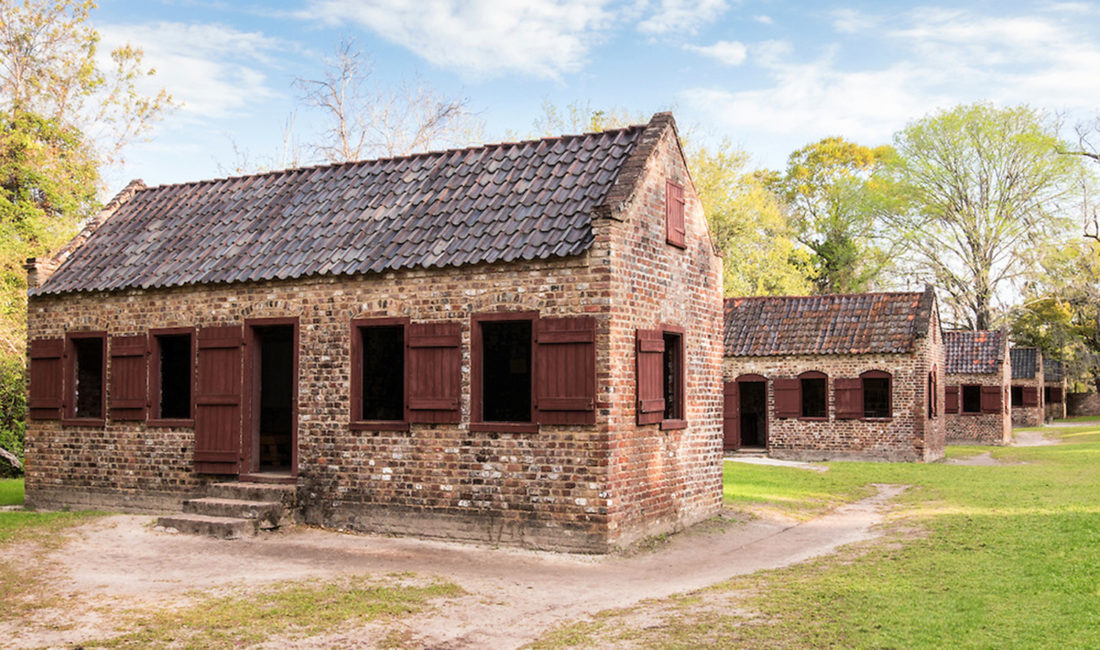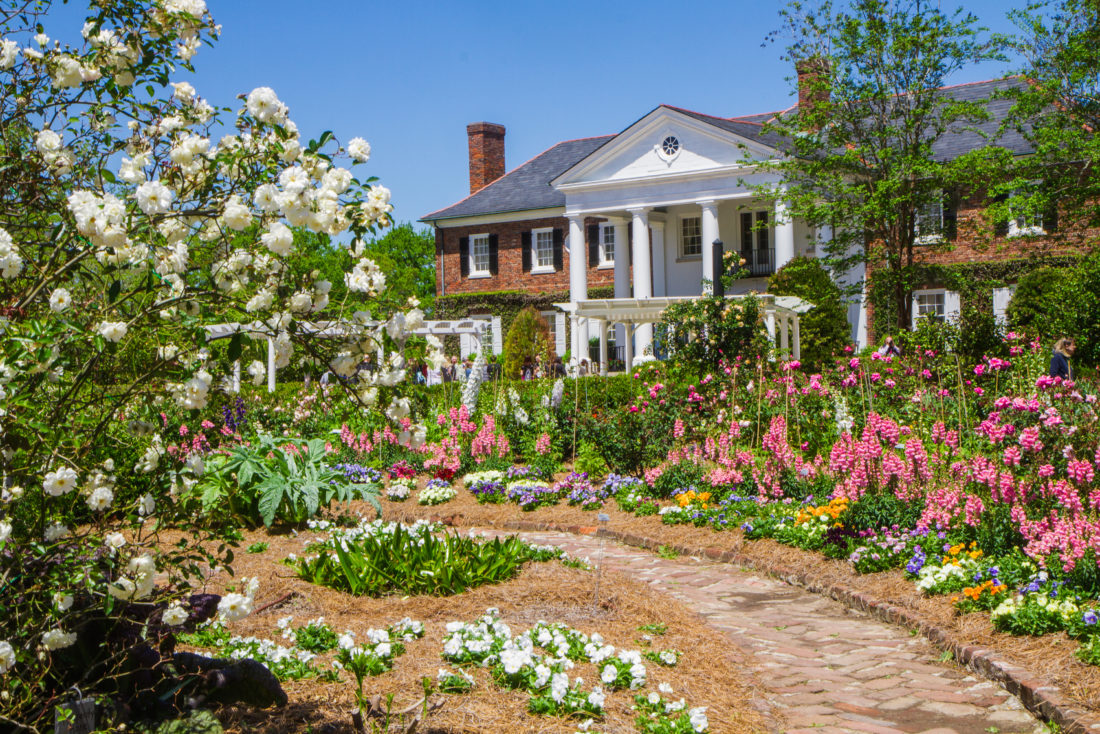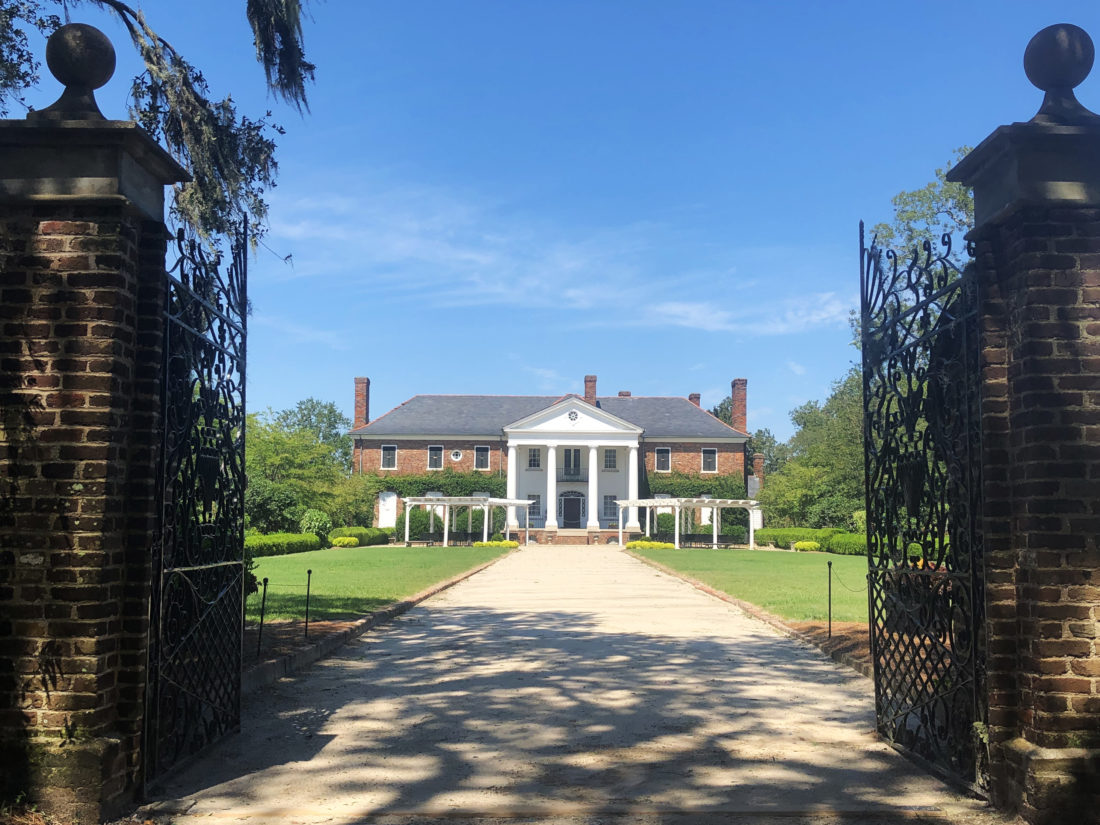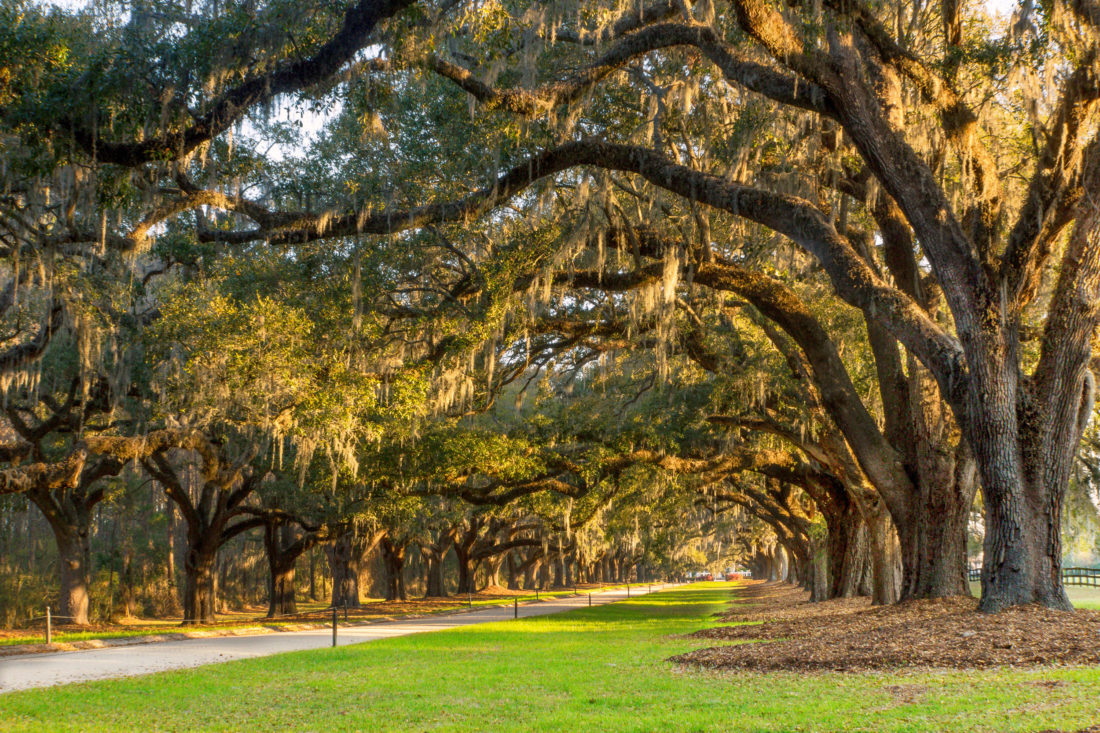Nancy McRae was out for a Sunday drive around Charleston with her husband, Harris, on a spring afternoon in 1955 when she spotted the lush landscape of Boone Hall Plantation, an estate founded by Major John Boone, an Englishman, in 1681. The sturdy, regal oak trees dripping in Spanish moss and blooming gardens put the splendor of the Lowcountry on full display. “That’s the most beautiful place I’ve ever seen in the world,” she told her husband. Harris, who shipped produce and brokered sales for many Charleston farmers, bought it from then-owner Dr. Henry Deas a few months later for Nancy.
Since the McRaes purchased the estate, it has carried on as a working farm—one of the oldest in the country—and eventually became an educational destination for tourists and residents alike. Today, pumpkins, tomatoes, peaches, and other crops fill the fields that sprawl across more than seven hundred acres, and visitors arrive for tours of the home, gardens, and more. Boone Hall has also made efforts to more fully tell the story of the people formerly enslaved there, including in the Black History in America exhibit, on view in the original small, brick slave cabins that stand in a row just outside the iron gates of the mansion, as well as in the “Exploring the Gullah Culture” presentation.

Photo: Courtesy of Boone Hall Plantation
Slave cabins at Boone Hall.
But as the surrounding town of Mount Pleasant exploded in size and development over the past decade, locals wondered if Boone Hall would be eventually lost to the area’s rapid urbanization, as neighboring estates such as Snee Farms and Brickyard have been. Thanks to a new conservation easement, though, Boone Hall has been saved from such a fate.
As of November 5, nearly six hundred acres of Boone Hall will be permanently protected from development and continue to operate only for agriculture, education, and tourism for every generation to come. Both the South Carolina Conservation Bank and the Charleston County Greenbelt Program contributed financially to the easement, held by the Lowcountry Land Trust, but current landowner Willie McRae’s donation of 75 percent of the land’s value—more than $21 million—truly made the preservation possible. “This was one of the largest financial contributions of value in the state of South Carolina,” says Raleigh West, the executive director of the South Carolina Conservation Bank.
The easement is a monumental win for conservationists in Charleston—this land deal guarantees Boone Hall will never be replaced with shiny new condos or golf courses but will instead continue to tell important stories from Charleston’s history.

Photo: Courtesy of Boone Hall Plantation
The gardens at Boone Hall Plantation.
“Boone Hall has always been a magical, mystical place for me ever since I was a child,” McRae says. “And now, with this conservation easement, I hope it will be that way right on for many a future generation.”
McRae’s memories of his life on the estate—caring for the cows, picking the crops, and cutting the grass—aren’t much different from the memories made there by visitors today. South Carolina State Senator Larry Grooms recalls his children picking pumpkins and taking their first hayride around the fields. Elliot Summey, the chairman of the Charleston County Council, says that Boone Hall has taught his children what it means to be from the Lowcountry. “This is the jewel in the crown that is Charleston,” Summey says.
But McRae reveals that Boone Hall hasn’t always been as cherished as it is today. In fact, he still remembers a 1979 newspaper article that listed Boone Hall as one of the worst tourist destinations in Charleston. It was an unlikely motivator. “That’s what made me go to work,” he says. “I couldn’t have my mother having one of the worst attractions.”

Photo: Courtesy of Boone Hall Plantation
The home at Boone Hall Plantation.
So over the years, McRae transformed the estate into a gathering place for the people of Charleston, with the history of the land at the heart, from hosting the world’s largest oyster roast on the back lawn to the Scottish Games and Highland Gathering. As he thinks about what his parents would say to such a land deal, he smiles, and says he knows they would be proud. Especially his mother, Nancy, who saw the promise of the estate long before it became a landmark beloved by Charleston.








